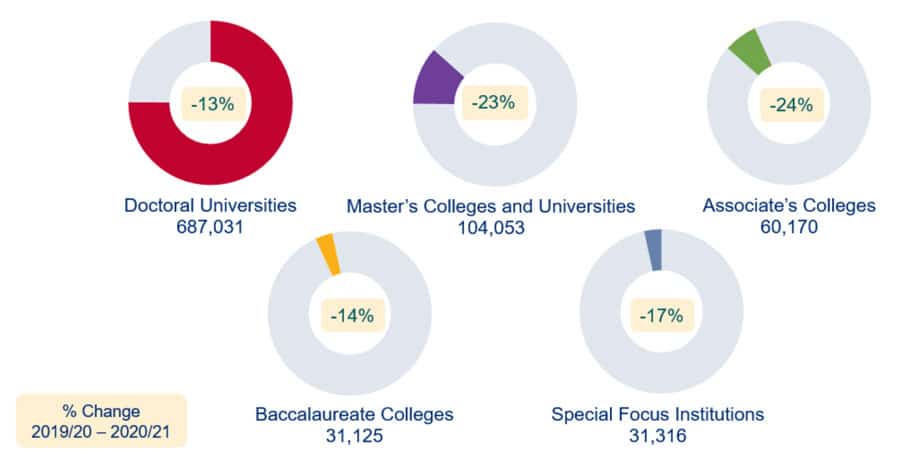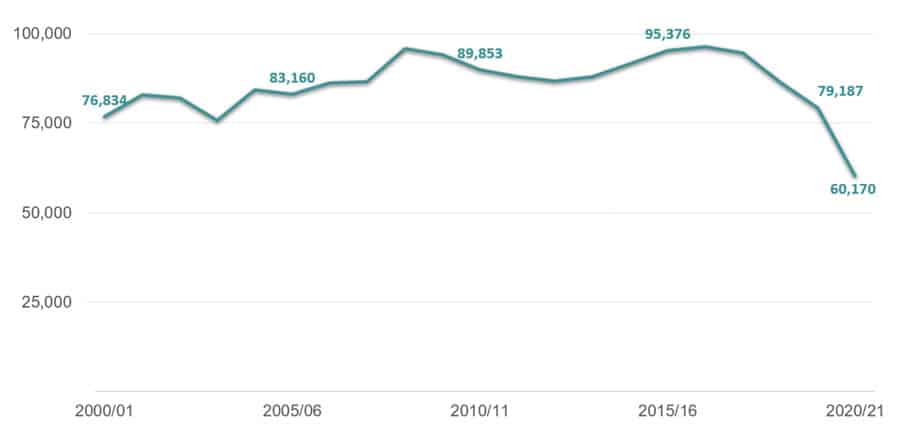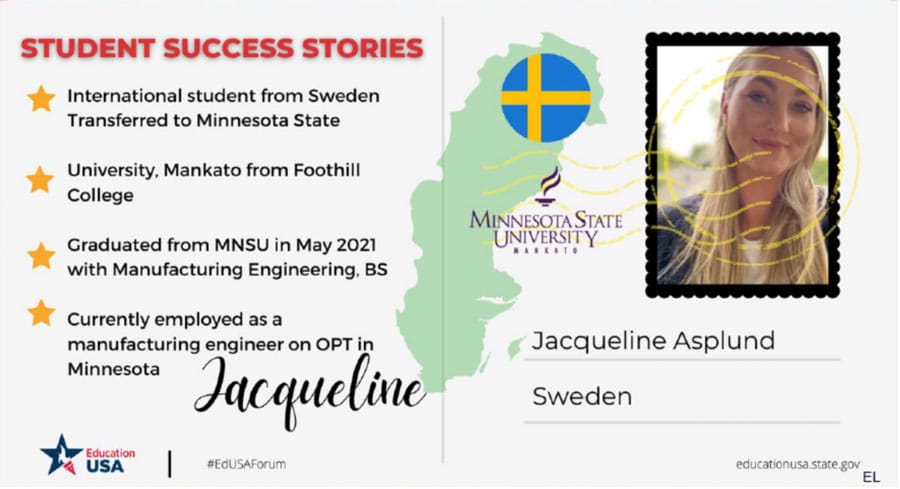Are too few international students aware of the advantages of US community colleges?
- US community colleges enrolled 24% fewer international students in 2020/21 compared to the previous year
- Declining international enrolments for this sector is a long-term trend, possibly because not enough international students are aware of community colleges’ substantial strengths
- Community colleges are often an ideal environment for new international students, especially in terms of “whole person” supports and English-language training
- Many also have partnerships with four-year colleges allowing students to transfer easily between each type of institution
The number of international students enrolled at US community colleges fell to 60,170 in the 2020/21 academic year, representing the steepest decline among institutional types in a time frame punctuated by severe pandemic restrictions. The data comes from IIE’s Open Doors 2021 Report on International Educational Exchange and is reported in an IIE/AIFS report entitled “Welcoming International Students at US Community Colleges.”

The number of international students at community colleges in 2020/21 represented 7% of all international students at US colleges and universities. The 24% decline from the previous academic year was accelerated by the pandemic and its effect on recruitment activities and students’ ability to travel, but it is also part of a general downward trend in international enrolments in community colleges.

A missed opportunity?
The IIE/AIFS report discusses a major issue that is likely impeding community colleges’ ability to recruit international students: lack of awareness that community colleges can prepare students to transition smoothly to degrees at four-year institutions.
Community colleges are two-year institutions in which the associate degree is the highest degree level offered; diplomas and certificates are also common credentials that students can obtain at these colleges. Importantly, many community colleges serve as a stepping-stone for students wanting more advanced degrees. The report elaborates:
“The “2+2” model, whereby students first earn an associate degree at a community college before transferring to a four-year institution to earn their bachelor’s degree, is unique to the US higher education system. International students and their families may not even be aware that this is a potential option for beginning their studies that can still result in a bachelor’s degree from their desired institution.”
What’s more, community colleges are often an ideal environment for international students to acclimate to US education and culture by offering:
- Affordability through low-cost tuition and fees;
- Open access enrolment – “allowing international students to gain support for English language development and academic preparation to pursue degree study.”
The report emphasises that there is an opportunity for US community colleges to better articulate their competitive strengths, especially at a time when so many students – domestic and international alike – face affordability crises due to widespread economic downturns and inflation.
Retention is the key
Community colleges often do not have nearly the international recruitment budgets that four-year and graduate colleges do. For this reason, the report suggests that the most convincing asset that community colleges in their recruitment arsenal is their current students. Many community colleges have excellent reputations for their devotion to serving the “whole person” enrolled with them, supporting students not only academically but also through mental health and community services, language-learning, and small class sizes. Leveraging the positive experiences of current and former international students – e.g., through a student ambassador programme – is a promising direction for community colleges. Those students can also highlight the partnerships and “2+2” arrangements with four-year colleges to prospective students overseas who may not be aware of them.
The report includes several “student success story” examples to prove how persuasive student outcomes and testimonials can be.

Positive news on the horizon
IE’s Spring 2022 Snapshot found that 68% of community colleges reported an increase in the number of international student applications 2022/23 programmes. The following chart shows the top senders of students to US community colleges.

For additional background, please see:
















